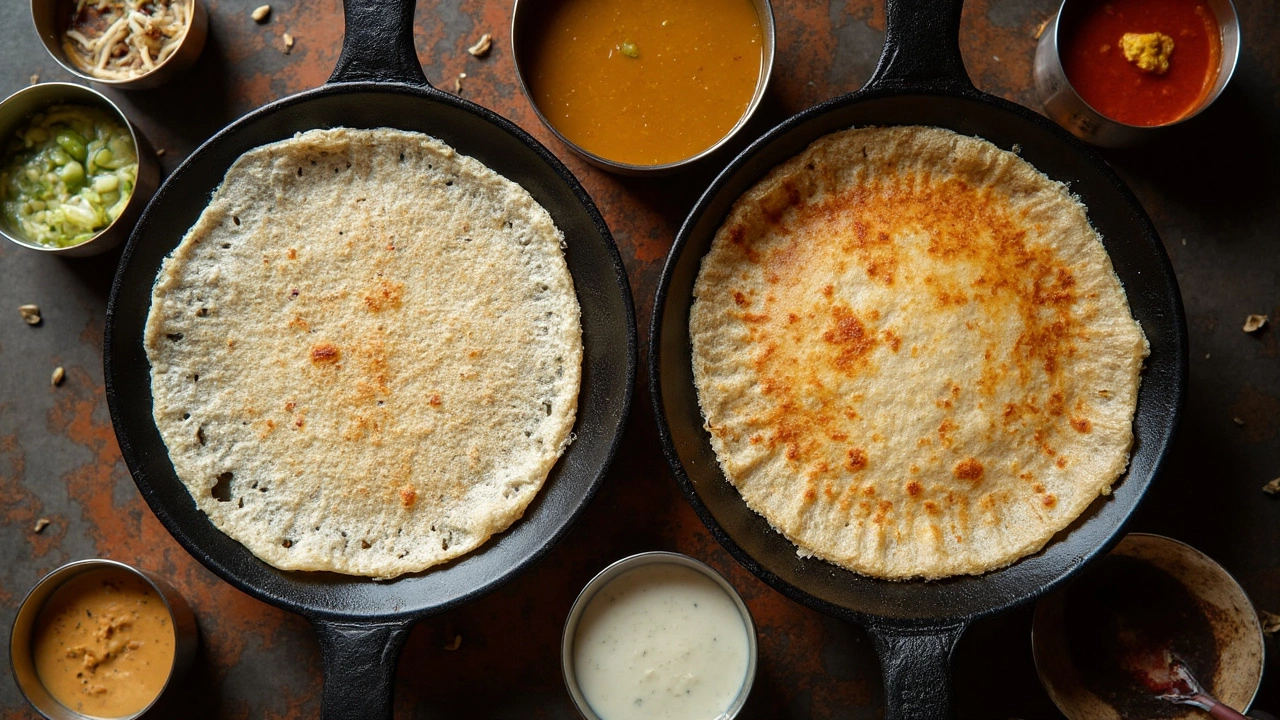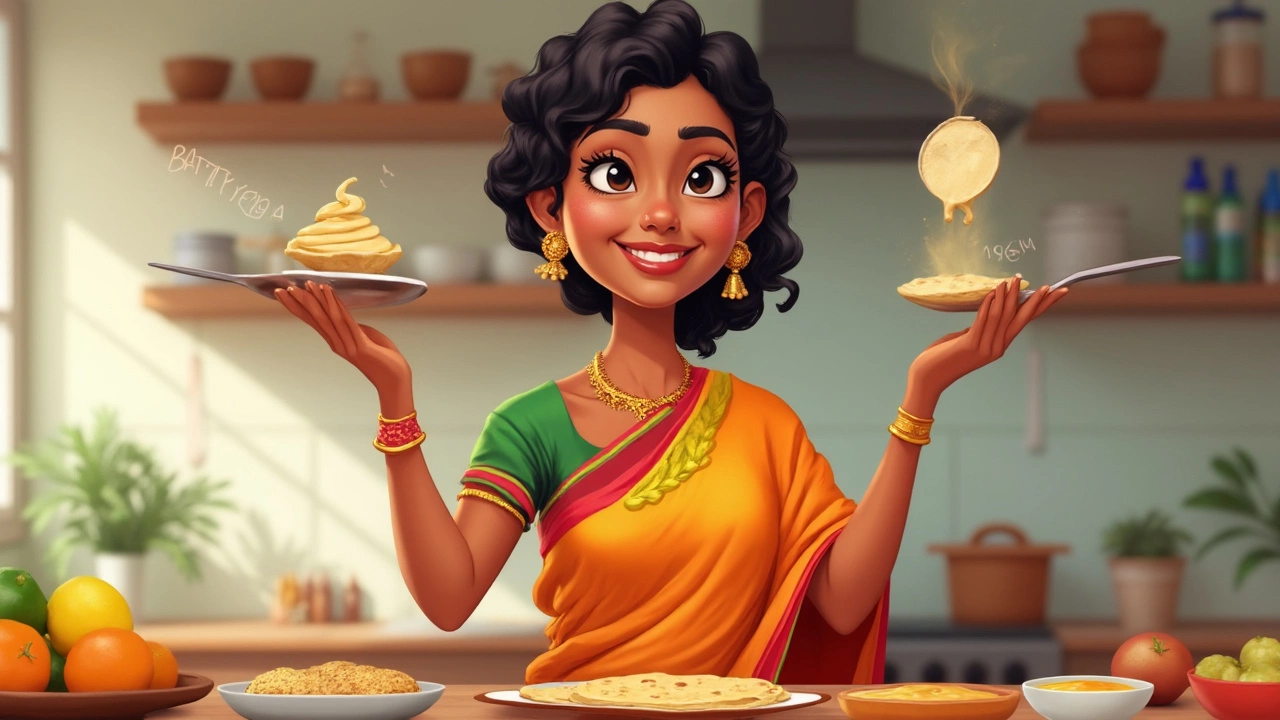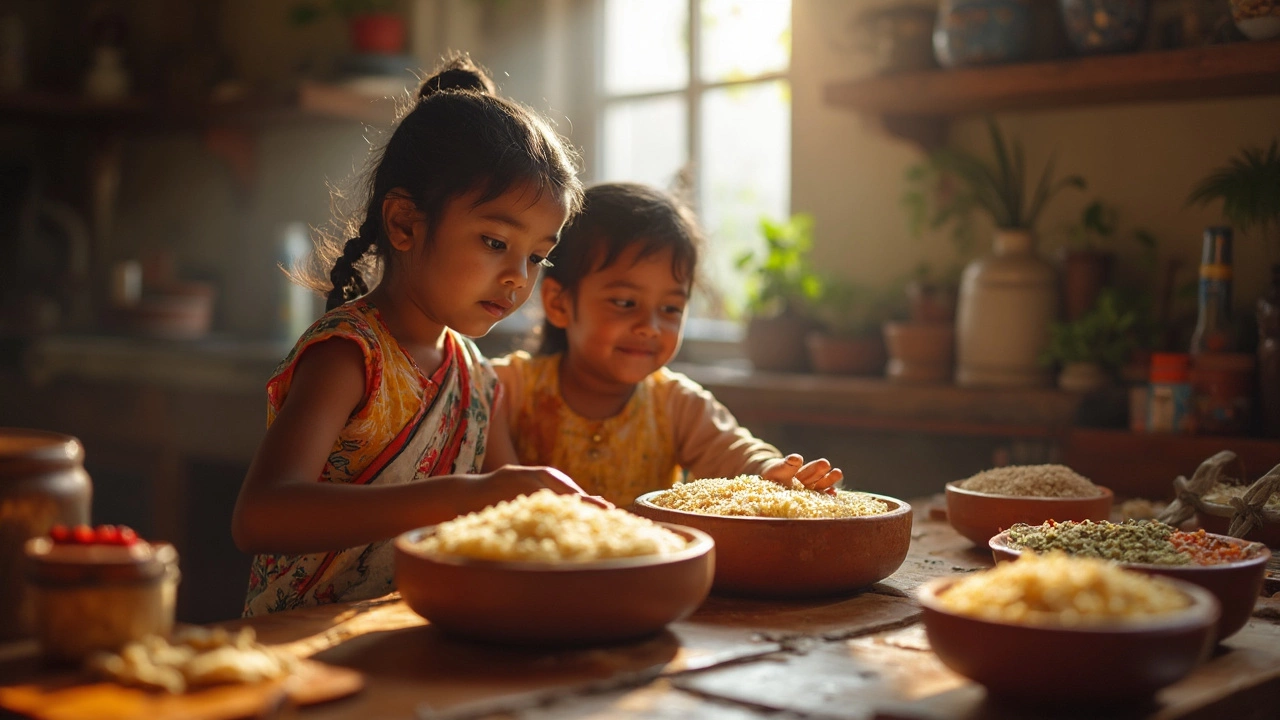If you've ever made dosa at home and stared down at the batter, wondering if the little specks you see are proof of character or a big mistake, you're not alone. The debate over whether dosa batter should be grainy or smooth isn't just a kitchen quarrel in South India—it’s a hot topic in households from Chennai to Christchurch, and especially in my kitchen in Auckland (where my husband Kieron swears by extra crisp dosas).
The Texture of Tradition: What Makes Authentic Dosa?
Authenticity in dosa starts with the batter’s texture. Walk into any bustling South Indian tiffin center, and you’ll spot dosas spanning the texture spectrum—some almost lace-thin with little holes, some sturdy and chewy. Traditionally, dosa batter is not super smooth. You want a certain level of graininess, almost like wet fine sand when you touch it. Why? The grainy texture helps with fermentation—that unique tang and airy rise—because the micro-crevices give space for the wild yeasts and helpful bacteria to thrive.
Historically, grandmothers would use a heavy stone grinder, which keeps the rice and urad dal a bit coarse even after hours of renewal grinding. The mega-smoothness people get these days often comes from impatient electric blenders. If your batter is too smooth, you might actually end up with dosas that taste flat and lack the signature crunch. The rougher grains cook unevenly, creating those crisp, mottled patches dosa fans love.
For the real dosa diehards, the degree of graininess can be personal. Some want their batter nearly sandy, others just slightly textured. There’s no single rule book, but if you crave that café-crackling top and tender belly, graininess is your go-to.
The Science Behind Batter: Why Graininess Matters
There’s more than tradition at play—it’s science, too. When you soak and grind rice and urad dal (black gram), you’re breaking down the hard shell of the rice and releasing the natural enzymes in the lentils. If you over-grind until silky smooth, your batter can lose the air pockets needed for fermentation. Without these tiny spaces, the natural fermentation slows down, yielding a thin batter that often doesn’t rise much.
Check out this simple fermentation data table, comparing grainy versus smooth batters over the crucial 12-hour period:
| Batter Type | Average Volume Rise in 12h (cm) | pH after 12h | Texture of Dosa |
|---|---|---|---|
| Grainy | 1.8 | 4.1 | Light, crisp, airy |
| Smooth | 1.2 | 4.7 | Flatter, less crisp |
What does this mean for you? A grainy batter creates more nooks for the fermentation agents and helps that magic happen. The result is a tangy, bubbly, and lively batter with oomph. When you finally pour it on the hot tawa (griddle), the small bits of rice puff up and brown faster, making the dosa crisp on the outside but still giving you a gentle chew at the core. You just don’t get that textural contrast from an overly smooth batter.

Real Life Kitchen: Mistakes, Fixes, and Pro Tips
Okay, so graininess is important, but how do you nail it at home? Here's where most home cooks, myself included, have tripped up plenty of times:
- Grinding too quickly or with little water: Rice and dal need some time and enough water to break down properly. Rushed blending leaves uneven chunks. Slow and low works best.
- Over-grinding: If you try to “fix” a too-thick batter by over-blending, you’ll end up with paste. Once it’s over-smooth, there’s no going back. Better to leave it a tad coarse.
- One-batch blending: Most blenders can’t handle a full dose at once. Always do smaller batches if you’re hand-grinding or using a home appliance to keep the texture right.
- Right ingredient ratios: Classic dosa uses a 3:1 or 4:1 ratio of rice to dal. Too much dal makes a gummy batter; too little, and it goes brittle. The ratio, plus the grind, equals gold.
One tip that saved my Saturday mornings: If your batter seems too smooth after grinding, add a few tablespoons of semolina (rava) or rice flour. Don’t tell my mother-in-law though—she insists on the “pure” method, but everyone needs a quick hack sometimes. Here’s what’s worked for me, especially in Auckland’s chilly winters: place the fermenting batter inside a turned-off oven with the light on. The warmth helps cultivate those fermentation bubbles without drying out the top.
On really cold days, some cooks (including a neighbour with a dosa cart down my street) sprinkle in a pinch of sugar before fermenting. The sugar isn’t for flavor, but to kick-start the wild yeasts when temperatures hover below 18°C (65°F). Little things like this can make the difference between a dense dosa and one that could make a South Indian auntie smile.
Debunking Myths: Smooth Batter Isn’t Always Better
You’ve probably seen glossy Instagram reels with batter so smooth, it looks like pancake mix. But Indian grandmas weren’t trying to win a visual contest; they wanted that interplay between crispy and soft. Dosa isn’t a pancake—it’s more of a crispy crepe, and that iconic feel comes from small rice bits toasting up quickly. A silky batter makes a denser, less flavorful dosa.
Another myth: “More urad dal equals better fluff.” Actually, overdoing the dal leads to stickiness. Whether you use the old-school stone grinder or a modern blender, pay more attention to how the batter feels between your fingers than how it looks. You want a slight grittiness, not a chalky or gritty mouthfeel after cooking, of course.
Ever wonder why dosa from street vendors tastes different than what comes out of your kitchen? Many pros ferment huge batches overnight, relying on the grainy batter to hold well—even with bulk volumes. They keep their batter slightly coarser because it releases more aromatic steam as it hits the hot tawa, triggering more browning (the Maillard reaction, for the food geeks out there).
If you're obsessed with those golden, lacy edges, skip the urge to “fix” your batter by over-processing. Let the nature of rice do the work. Some specialty rice—sona masuri or parboiled rice—also helps add that extra edge, thanks to their higher starch content that breaks up beautifully into those little bits you want.

Troubleshooting & FAQs: Getting Your Perfect Dosa at Home
I’ve burned through countless kilos of rice, woken up to flat, sad batters, and learned a few tricks along the way. Here are answers to the questions I hear from friends and my own kitchen adventures with Kieron:
- Q: My batter looks too grainy and thick – did I mess up?
A: Not at all. Just add a little water, gently mix by hand, and see if it pours like cream. Grainy to touch, smooth to pour, that’s what you want. If it’s thick and sandy, loosen it a bit, but don’t blend! - Q: It’s been 12 hours and my batter hasn’t risen – help!
A: Warmth is crucial. Move the bowl somewhere warmer. If it’s been cold, add a teaspoon of fenugreek (methi) seeds next time—they boost fermentation and give a nice crisp to finished dosas as well. - Q: Why do my dosas break or stick?
A: Batter too thick or too smooth is usually the cause. Thin it with a splash of water and ladle quickly onto a well-heated, lightly greased pan. Don’t use nonstick—you want cast iron if possible for max crunch. - Q: Are there different kinds of dosas that need different batters?
A: Absolutely. For Masala Dosa or Paper Dosa, keep it grainy. For soft, thick Uttapam, a slightly finer grind helps, but never go full-smooth like pancake batter. - Q: Can I freeze dosa batter?
A: Yes! Portion it out after fermentation and freeze. Just whisk it gently after thawing, add a splash of water if needed, and you’re good to go.
If you want to experiment, try adding a spoon of chana dal or poha (flattened rice) during soaking. Both add a slightly different flavor and help dosas brown up nicely (especially helpful for those testing out Indian cooking in colder climates like New Zealand, where fermentation acts differently than in steamy India).
So, the next time you find yourself peering into that bowl of dosa batter wondering if it should be grainy or smooth, remember—aim for that gentle, gritty feel. Trust your fingers and your instincts more than an online video or recipe. Texture isn’t just a detail; it’s the secret to that irresistible double act of crunch and softness that makes dosa… well, dosa.
